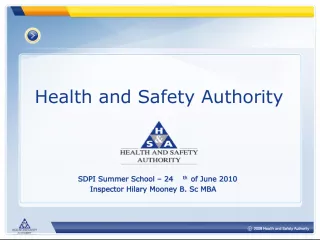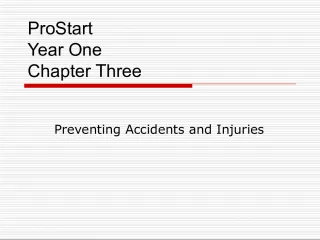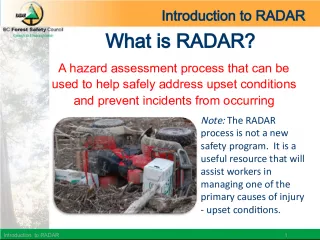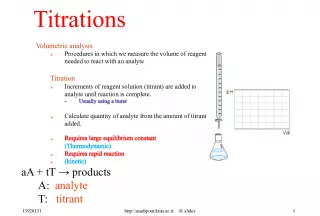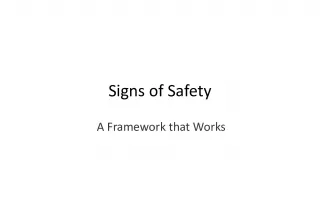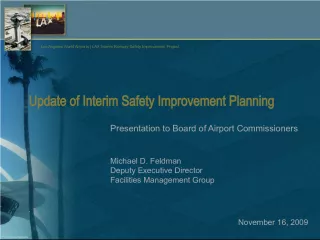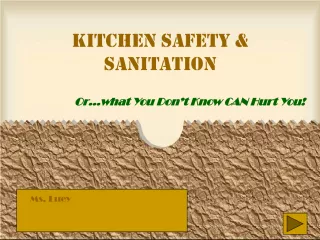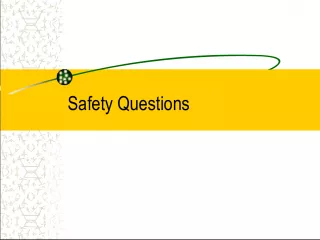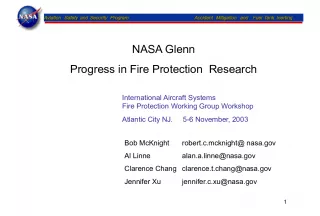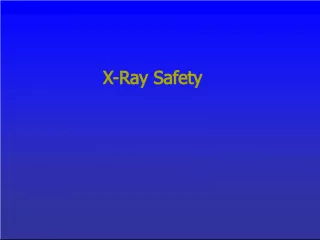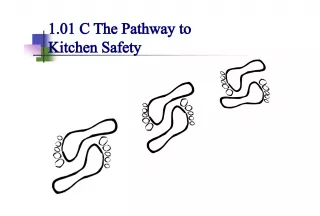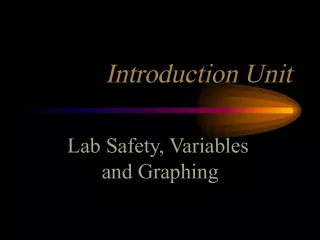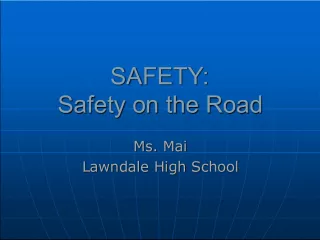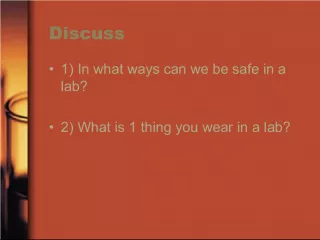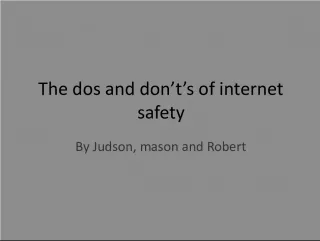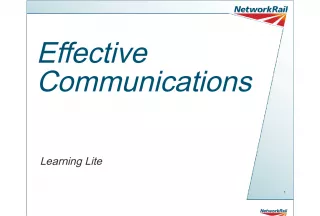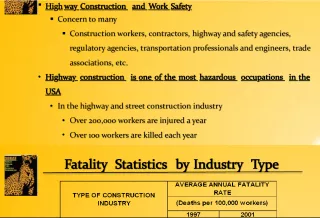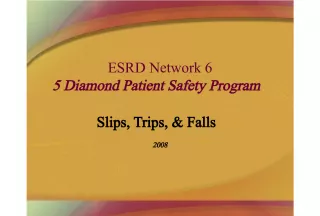Lockout Procedure for Workplace Safety
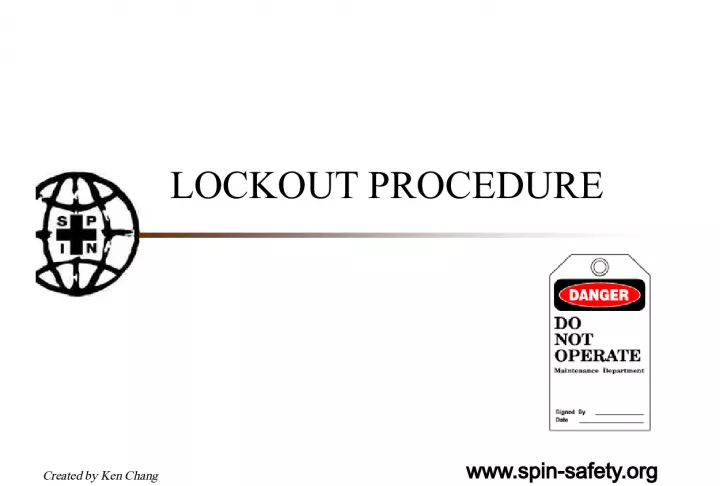

Get a better understanding of lockout procedures for safety in the workplace with this presentation from SPIN. Learn how to safeguard against hazardous conditions and unsafe acts, and confirm accuracy and compliance with the latest standards and best practices.
- Uploaded on | 1 Views
-
 willowbatz
willowbatz
About Lockout Procedure for Workplace Safety
PowerPoint presentation about 'Lockout Procedure for Workplace Safety'. This presentation describes the topic on Get a better understanding of lockout procedures for safety in the workplace with this presentation from SPIN. Learn how to safeguard against hazardous conditions and unsafe acts, and confirm accuracy and compliance with the latest standards and best practices.. The key topics included in this slideshow are lockout procedure, workplace safety, hazardous conditions, unsafe acts, compliance,. Download this presentation absolutely free.
Presentation Transcript
1. www.spin-safety.org Created by Ken Chang LOCKOUT PROCEDURE
2. Created by Ken Chang Disclaimer The information presented in this presentation has been compiled from sources believed to be reliable and is intended to be a tool to assist and guide you in building your own presentation. This program may not address all the hazardous conditions or unsafe acts that may exist. For that reason, SPIN cautions users to confirm accuracy and compliance with the latest standards and best practices. Local, State/Provincial and Federal regulations take precedence over this material. Implementation of any practices suggested by this program is at your sole discretion, and SPIN will have no liability to any party for any damages including, but not limited to, direct, indirect, special or consequential damages, arising out of or in connection with the information provided or its use.
3. Created by Ken Chang Lockout Purpose n To ensure the Safety of equipment in Unsafe Condition
4. Created by Ken Chang Normal Lockout Procedure ( LTCT) n LTCT (LTTT) : 1. Lock 2. Tag 3. Clear (Test) & Try
5. Created by Ken Chang 1. LOCK n 1. Physically disconnect all power or dangerous sources, such as electricity, compressed air, chemical gas, liquid, etc. n 2. Lock sources with locks one by one n 3. Keep the key for personal possession
6. Created by Ken Chang 2. TAG n 1. Fill Reason, Name, Date in the Tag n 2. Hang (lock) the Tag on the lock n 3. Multiple lockout requires one lock for each individual
7. Created by Ken Chang 3. CLEAR (TEST) and TRY n 1. Clear the remained electricity, air pressure, spring force, potency energy, etc. (Use instrument to Test to ensure) n 2. Then Try to start the equipment to ensure safety
8. Created by Ken Chang GENERAL EXECPTION(1) n 1. Small electrical equipment with Single and Only power source n 2. Only to change or replace bulb or parts n 3. Within visible range n 4. Do Clear & Try only
9. Created by Ken Chang GENERAL EXECPTION(2) n 1. Damage furniture n 2. Tag (and put away) from erroneously use
10. Created by Ken Chang GENERAL EXECPTION(3) n 1. Change Fluorescent bulbs n 2. Use insulated ladder n 3. Within visible range n 4. Turn of the switch only
11. Created by Ken Chang GENERAL EXECPTION(4) n 1. Lockable only power source n 2. Downstream only n 3. Lock the power source without physically disconnect the power source n 4. Still to do Tag, and Clear & Try
12. Created by Ken Chang SPECIAL PROCEDURES n 1. Not performing all the normal lockout procedures n 2. Not included the above exceptions n 3. Must have written Special Procedure n 4. Only for the specified conditions
13. Created by Ken Chang KEY POINT(1) n 1. Any one found unsafe condition n 2. Performed by qualified person n 3. Signed only by above individual n 4. First lock, Last unlock
14. Created by Ken Chang KEY POINT(2) n 5. Do not use pencil or correction liquid on Tag n 6. The maximum tag period is one month* n 7. No one can take off others lock* n *Unless specially approved by mgmt.
15. Created by Ken Chang TROUBLESHOOTING n 1. Only could be done by qualified person n 2. To supply the power sources within lockout period n 3. Only to observe and test the equipment n 4. Perform the lockout again after observation
16. Created by Ken Chang MUTILPLE LOCKS n 1. Owner first lock, perform the lockout procedure, and last unlock n 2. Other individuals put personal Lock and sign on Tag
17. Created by Ken Chang TRANSFER RESPONSIBILITY n 1. Explain situation to the new person(s) n 2. T transfer the keys n 3. Sign off the tag(s) n 4. New person perform the lockout procedures n 5. New person sign on the tag
18. Created by Ken Chang COMPLETE THE LOCKOUT n 1. All the jobs completed n 2. All other tags and locks removed n 3. Power supplied and tested O.K. n 4. All safety features replaced n 5. Remove the Tag and back to normal use
19. Created by Ken Chang VIOLATION PENALTY n 1. Operate the locked equipments without permission n 2. Break the locks n 3. Remove others tags n 4. Stop the job and perform the lockout n 5. Disciplinary action for violation
20. As a Safety Professional, SPIN encourages you to submit safety resources that are particularly beneficial to fellow Safety Professionals. We welcome your suggestions and thank you for your input. Please use the following instructions when submitting resources. 1. Please include your full name (first & last) in the subject section of the your email 2. Please include a brief description, name of program and version of any and all files submitted 3. Please use a compression program, like WinZip, when submitting multiple or large files 4 Please include appropriate contact information (name, phone number, etc.) when referring potential new members 5. Include links to safety related URL's in the description section 6. Please send photos and graphic files as 72 dpi jpg, tif or gif files submit all items to : info@spin-safety.org For more information about SPIN visit the web-site at www.spin-safety.org or call 1-800-673-0439

